HMS Queen Elizabeth will operate an array of aircraft but the most important, the aircraft she was designed around, will be the F-35B.
It’s no secret that the F-35 has had severe cost and schedule issues.
The F-35 programme has gone through serious teething problems, problems also experienced by the majority of complex aircraft flying today such as the F-15, Typhoon or any other modern combat jet.
The biggest issue for the project continues to be the fact it is the most expensive military weapons system in history owing to the sheer scope of the programme but that being said, aircraft costs are now coming down and will soon be similar to the cost of many aircraft it’s replacing.
Today the programme is maturing rapidly, right now much of the activity around the jet is dealing with software bugs and testing to validate the software, with most of the physical testing being to do with weapons integration and the gradual scaling up of capabilities that comes with each new software block.
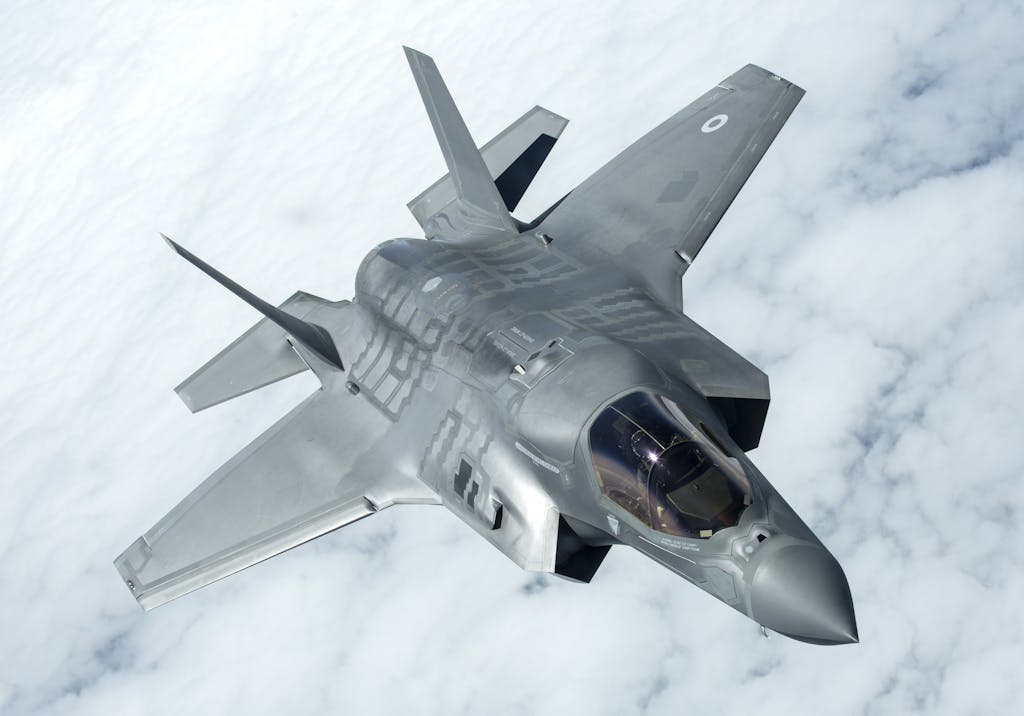
The jet is a quantum leap in capability, able to give the pilot as much information as only theatre commanders have previously had. While the primary value of the jet is in its sensor and networking capabilities, it is also valuable in that it’s able to perform many tasks designed to increase the lethality of not only itself but other assets, such tasks include the ability to co-ordinate small fleets of unmanned combat aircraft, guide weapons launched from other platforms (even warships), launch a wide-range of its own weapons and use it’s own radar to conduct electronic attacks.

UK Paveway IV & ASRAAM.
A key element of 21st century air power is clearly working and smoothly implemented coalition operations, the F-35 provides a unique integrated air combat capability whereby coalitions of joint or allied F-35s can be supported in common. The F-35 was designed from the outset to bring these capabilities while also being interoperable across a coalition of air power.
Two networks are core to this operability: the Link-16 and the new Multi-Function Advanced Datalink (MADL). These systems allow the F-35 to communicate with nearly all current and future NATO assets.
Link-16 is currently utilised by most existing platforms fielded by NATO members and will allow F-35 to integrate seamlessly into a coalition force structure.
MADL will complement the current networks as NATO’s first high bandwidth, low probability of detect and intercept connection. The fundamental design features of MADL enable all NATO F-35s in a deployed coalition to communicate within an Anti-Access/Area Denial environment.
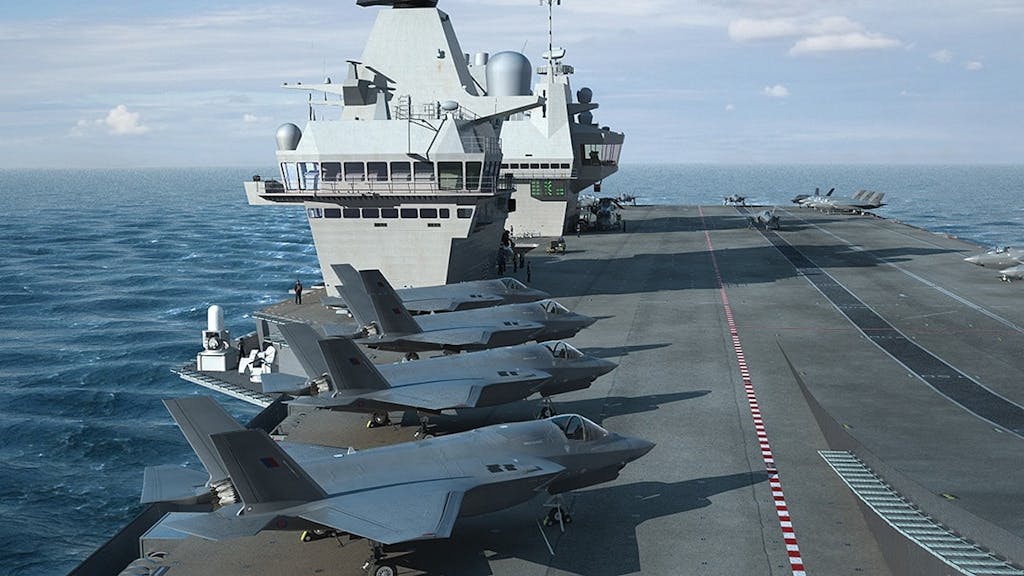
The potential for cooperation between the United Kingdom and coalition forces all using the F-35 variants is significant, in terms of coalition warfare the F-35 further increases the situational awareness of all parties to a greater extent than anything flying today, resulting in a quantum leap in capability for coalition forces.
Such is the aircrafts sensor and data fusion capabilities, a small number of F-35s could provide the UK and her coalition allies with situational awareness within defended airspace where platforms such as E-3 AWACS and E-8 JSTARS would be unable to operate.
F-35s could find and designate priority targets within defended airspace for a less stealthy fleet to attack from a relatively safe distance, further enhancing coalition capability.
The F-35s value is not only in its stealth or combat capability, it’s also in the flying sensor network it creates in the battle space.
The ability of the F-35 to drastically improve the combat capability of other assets was demonstrated recently when an F-35 and Aegis Weapon System worked together during a live fire exercise, with the F-35 passing sensor data to another platform which then engaged the target.
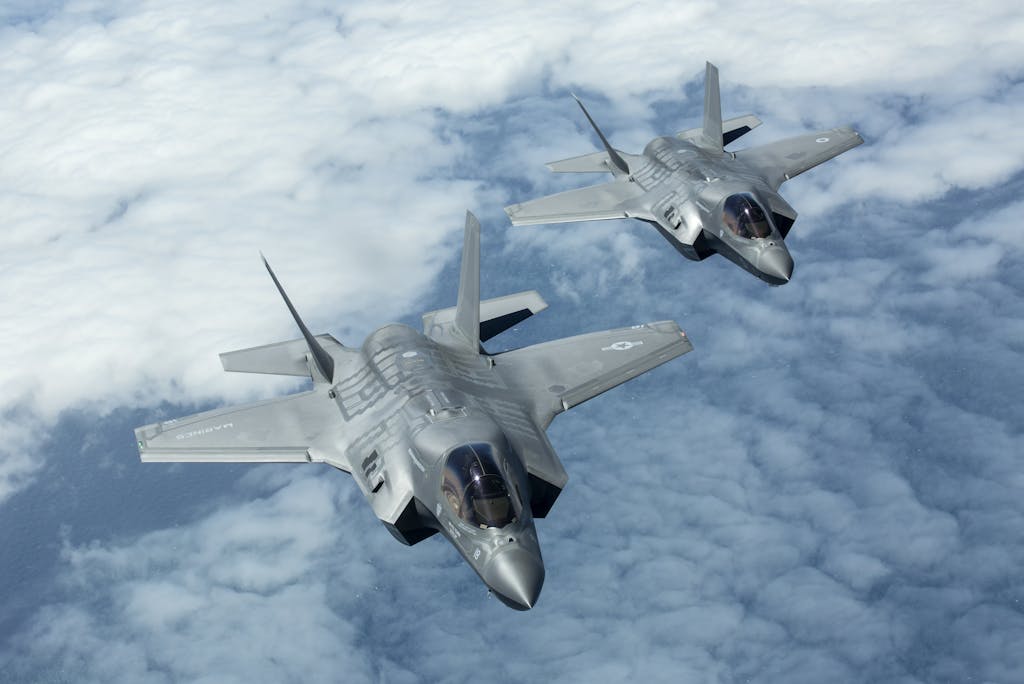
The exercise was the first live fire missile event that successfully demonstrated the integration of the F-35 to support Naval Integrated Fire Control-Counter Air and represent a very promising exploration into the interoperability of the F-35 with other naval assets.
The F-35 will drastically increase the situational awareness of the forces with which it will deploy and for the UK, where deployed numbers may be a concern, it represents a fantastic way to enhance combat capability in any coalition or national effort.
It is my opinion that the F-35 will drastically increase the situational awareness and combat capabilities of the forces with which it will deploy and for the UK, where numbers may be a concern, it represents a fantastic way to enhance combat capability in any coalition or national effort.
There is no denying that jet is overbudget and behind schedule compared to original estimates but an incredibly capable platform is emerging and one that I believe will shape the future of air combat.

Merlin helicopters were the first aircraft to begin flying from HMS Queen Elizabeth and they will soon be followed by other helicopter types and eventually F-35s in Spring 2018.
The UK currently has 12 F-35s with more being delivered.
In order to prepare for operating from HMS Queen Elizabeth, Royal Navy sailors have also trained alongside their US Navy counterparts on the flight deck of the amphibious assault ship USS Wasp. According to a US Navy press release, the Royal Navy sent six Sailors to integrate into Wasp’s flight deck operations to prepare them for their upcoming Queen Elizabeth class aircraft carriers.
Recent F-35 trials aboard the USS Wasp weren’t just an operational test for the United States Marine Corps, with much of the data produced being used to inform the USMC’s declaration of initial operating capability but also for the United Kingdom.
UK personnel were fully embedded in the USS Wasp trials and will use the data gathered from this event, future trials and operational deployments to support the UK’s flying trials aboard HMS Queen Elizabeth off the US coast in Spring next year.
British F-35 pilots also recently embarked on the USS America for at-sea developmental testing phase 3 (known as DT), the last trial that paves the way for the US Marine Corps to deploy the jet operationally on amphibious assault ships.
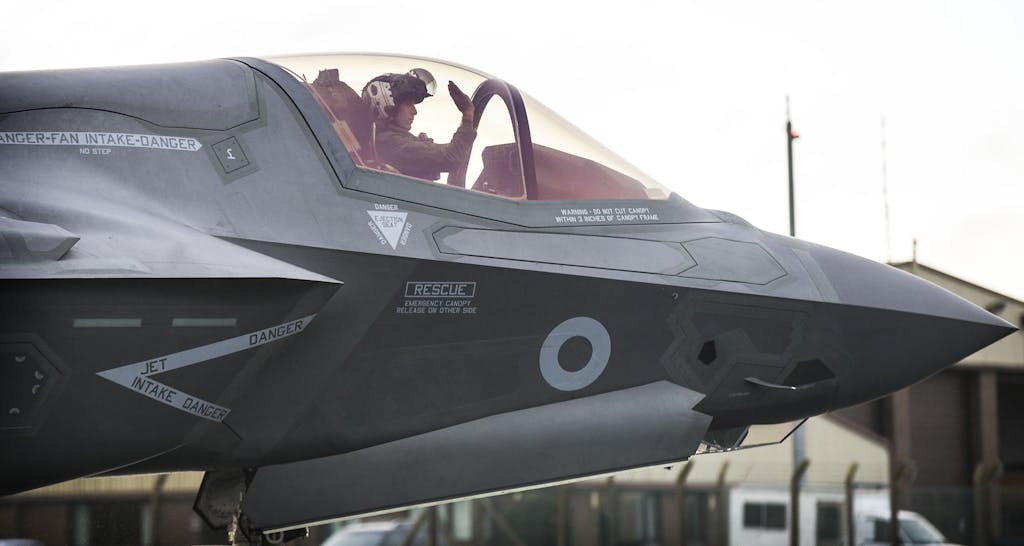
BAE Systems test pilot Pete Wilson said about the upcoming trials on HMS Queen Elizabeth:
“This will not be a DT phase. Testing on the Queen Elizabeth will be like DTs 1, 2 and 3 combined.
We don’t need to use fully instrumented aircraft; we already understand most of the loads on the aircraft systems, as we have tested that during earlier tests.”
Captain Jerry Kyd, commander of HMS Queen Elizabeth, commented on the initial deployment and the gradual increase in air wing numbers:
“We are constrained by the F-35 buy rate even though that was accelerated in SDSR in 2015, so initial operating capability numbers in 2020 are going to be very modest indeed.
We will flesh it out with helicopters, and a lot depends on how many USMC F-35s come on our first deployment in 2021. But by 2023, we are committed to 24 UK jets onboard, and after that it’s too far away to say.”
In 2023, the UK will have 42 F-35 aircraft, with 24 being front-line fighters and the remaining 18 will be used for training (at least 5 on the OCU), be in reserve or in maintenance.
In addition to the joint force of Royal Air Force and Royal Navy F-35Bs and their pilots, the air wing is expected to be composed of a ‘Maritime Force Protection’ package of nine anti-submarine Merlin HM2 and four or five Merlin for airborne early warning; alternatively a ‘Littoral Manoeuvre’ package could include a mix of RAF Chinooks, Army Apaches, Merlin HC4 and Wildcat HM2.
We understand that vessel would still carry at least one F-35 squadron aboard in such circumstances to offer air defence as well as support to the helicopter assault activities.
The Crowsnest AEW&C aircraft will come from a number of the embarked Merlins (any of which can be fitted with the sensor package), the number again scaling with requirements.
Recently, the Ministry of Defence confirmed plans for the deployment of American F-35 aircraft alongside British jets aboard HMS Queen Elizabeth.
The addition of US Marine Corps aircraft will see HMS Queen Elizabeth sail with 24 or so F-35Bs in addition to around 14 or so helicopters for her maiden deployment. It is understood that the US aircraft will augment British jets on coalition operations.
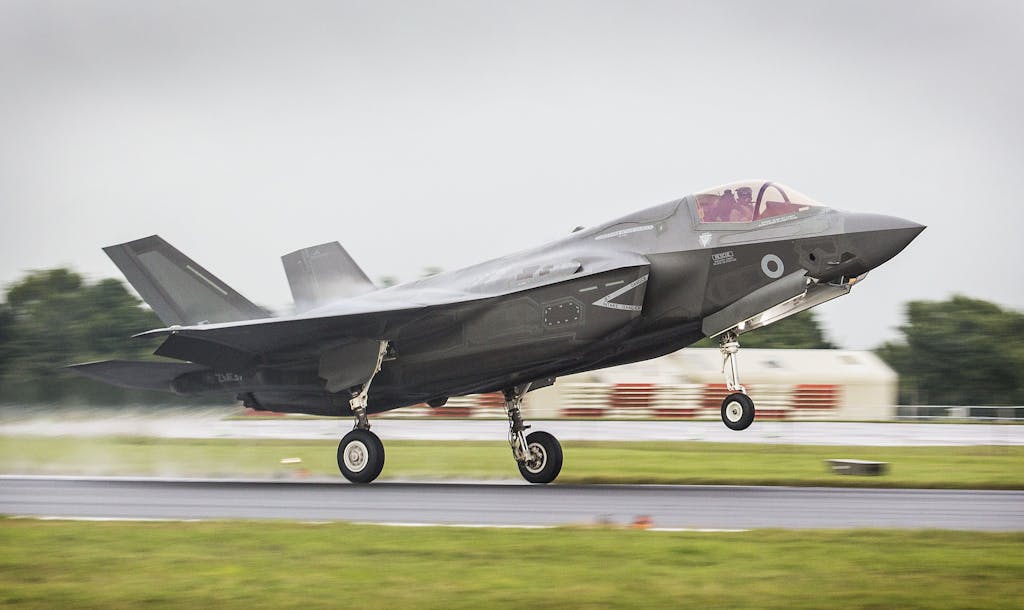
A source we spoke to, currently flying the jet, explained to us that the vessels will deploy with the number and type of aircraft required for a specific deployments:
“Where F-35B is based is entirely down to the most suitable basing option for the tasks/missions is being sent to do. If that’s a well-founded host nation base, great; if it’s the Carrier, great; if it’s an austere location, fine.
Range, logistics and other ‘enablers’ such as AAR and connectivity will determine what’s the best option.”


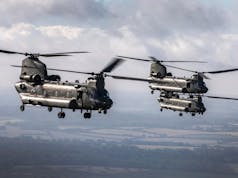
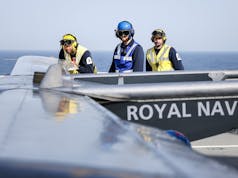
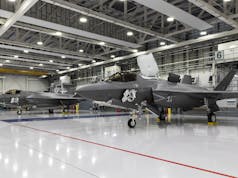
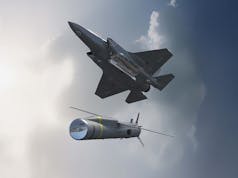

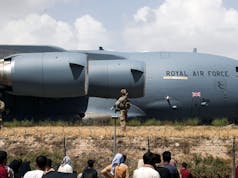

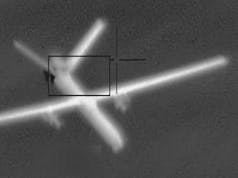
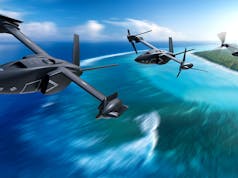
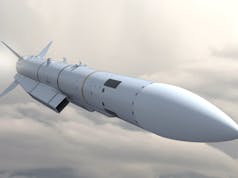

Unfortunately unless funding is found to upgrade the 6 destroyers with the US CES system the intergrated naval fire control won’t happen.
One would of thought that given the no proper air defence system on the Ship herself, giving the Destroyer a helping hand with the F 35’s in a CES system would of been a priority.
Still the rest of the capabilities mentioned are doable which is good.
aaaaaaaaaaaah! we are all going to die, the worlds going to end aaaaaaaaaaaaaah! 😮 😮
My god blar blar the doom and doom loons never a good word for the most powerful ship ever set sea outside side America and the best fighter on the planet ..
Why do some people always call for the UK to adopt American systems? We have our own rather excellent air defence Destroyer, ASW Frigate and submarine capability. And if you need air defence capability on a carrier your defending ships have failed to do their job. And its probably too late.
A great jet that is a leap forward on the old barriers and carriers themselves have huge potential.
We now need to spend to be able to fully utilise the potential, we need
Anti ship missiles for both the escorts and the f35s
link 16 for the Wildcats so they can effectively communicate their sensor data back
to actually place a firm order on 60 odd f35s and stop putting the decision off and off.
speed up the production of the new frigates so they come into service at least at the same time or better still before the current ones go out. some overlap would be good in case of any delays or problems
place the order for the new solid state support ships, ideally designing with a hanger for helicopter operations.
some more naval helicopters, the current fleet seems hugely stretched with marine, asw and aaw roles.
No easy task to prepare Harrier style jump jets and all previous mission designates of classic propulsion designs
As per another article on UKDJ today – the UK has a 15% share of all F35 – so why dont we place a lifetime order of 200 and make our operational fleet 138.
I agree with Steve – a firm order for 64 (4 Sqdns of 16) would be perfect with 32 being embarked as standard.
The QE comes alive when it is racked and stacked with aircraft, lets make this class NATO’s European carrier force.